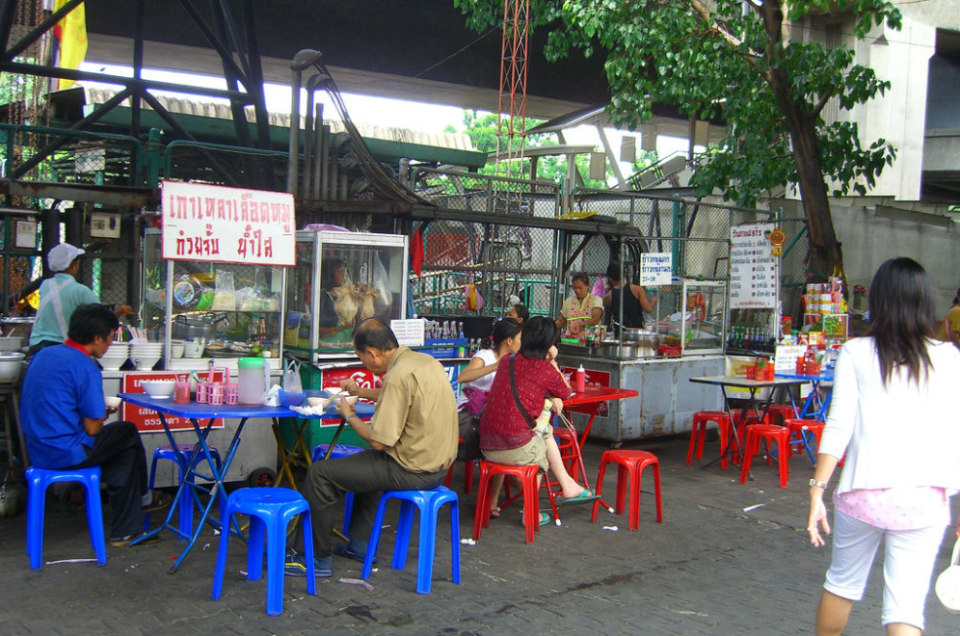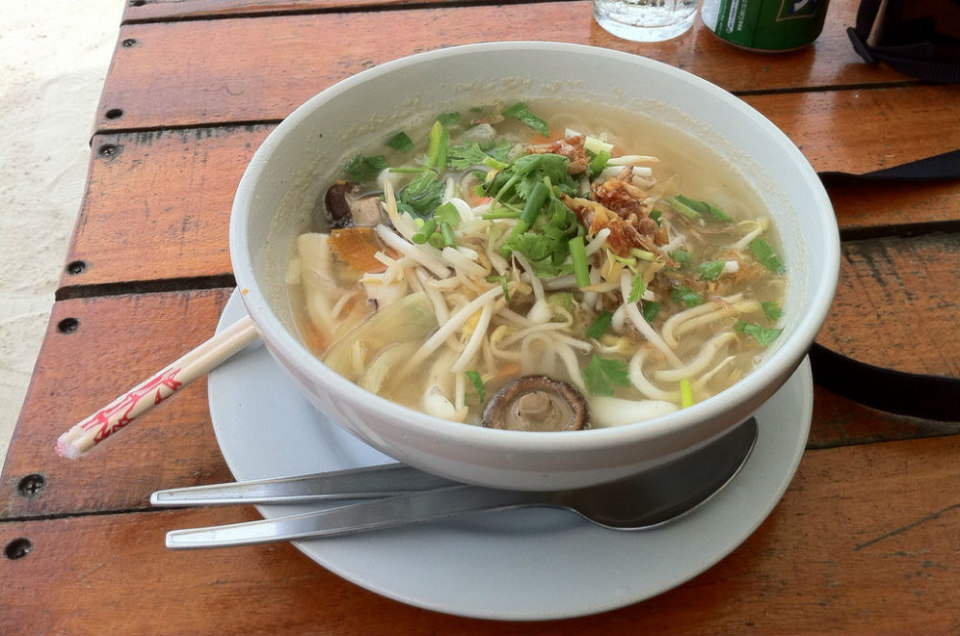Green curry, red curry, pad thai. So reads the menu of your average Thai restaurant back home. Travel to Thailand, though, and the food stalls on the streets of Bangkok paint a different picture.
A million miles from the same-same flavours that have been adapted to foreign palates in the US, Europe and Australia, the real thing screams hot, spicy, sweet, salty and sour all at once. Chow down fiery papaya salad, slurp on steaming noodle soup and chew on skewers of grilled chicken and pork satay – when in Thailand, let your eyes, nose and stomach lead the way and you won’t be disappointed.
Papaya salad
If you thought pad thai was the national dish, think again.
Somtum, or green papaya salad, is what fuels the Thai population on an almost daily basis. With a base dressing comprised of fish sauce, chillies, garlic, sugar and lime, this salad is of humble north-eastern origin and packs in the spice like you didn’t know was possible. Papaya salad comes in several varieties – the basic somtum thai includes tamarind paste, miniature dried shrimps and peanuts for crunch, while the firm favourite among those north-easterners is somtum puu pla rah, made with a ghastly-sounding-but-surprisingly-delicious concoction of whole freshwater crabs (small ones, shell and all) and gourami fish that has been fermented for months beforehand.
Somtum kai khem is made with salted, hard-boiled eggs, while other innovative twists include somtum polumai, knocked up with fruits instead of vegetables – but just as much kick from the chillies! Thais mop up their somtum juices with glutinous sticky rice; the secret is to take a finger full and roll it into a ball before dipping in different dishes.
Other options to accompany papaya salad include namtok and laab salads, again heavy on spice and made with pork, chicken, beef, duck or catfish and plenty of fresh mint and other herbs; plus lighter but just as flavoursome soups, such as tom saap, and skewers of freshly grilled chicken, pork and beef – fatty pork neck in particular is a winner!
Somtum usually sells for 30-35 baht, other dishes are around the same price and sticky rice is almost always 5 baht per portion, wherever you eat! Papaya salad stalls are just about everywhere – look out for the large pestle and mortar making a ‘pok pok pok’ sound as the magic is created.
Noodle soup
Office workers slurping on their lunch break, taxi drivers devouring mid afternoon, late night revellers soaking up the alcohol – whatever time of day you happen to be on the streets in Thailand, you can’t miss the sight of people chowing down huge bowls of noodles, seemingly on every corner.
Noodle soup is known locally as guay deow – choose from soup bases like hot and sour tom yum, nam tok with pig’s blood thrown in for extra flavour, or the plain and simple , essentially a stock base. Next, choose your noodles – common favourites include yellow wheat noodles, ba mee, and a variety of thicknesses of rice noodles – sen lek are thin and flat, sen mii are thin and round, while sen yai are wider. Wunsen are glass noodles made from mung beans. If you can’t master the lingo, just point to the masses of noodles on display!
Finally, choose your meat – typically pork, chicken or beef – throw some beansprouts, fresh basil leaves and other vegetables on top, add the obligatory seasoning (fish sauce, sugar and dried chillies adorn the tables at every noodle shack, ready for you to create a dish to your own taste – and also a handy way to hunt down the right stall in the first place!) and tuck in. Noodle soup stalls are everywhere – literally – and a bowl can cost anywhere between 15 and 50 baht, depending on what goes into it. Many places also offer smaller, almost taster-sized bowls for around 10 baht.


